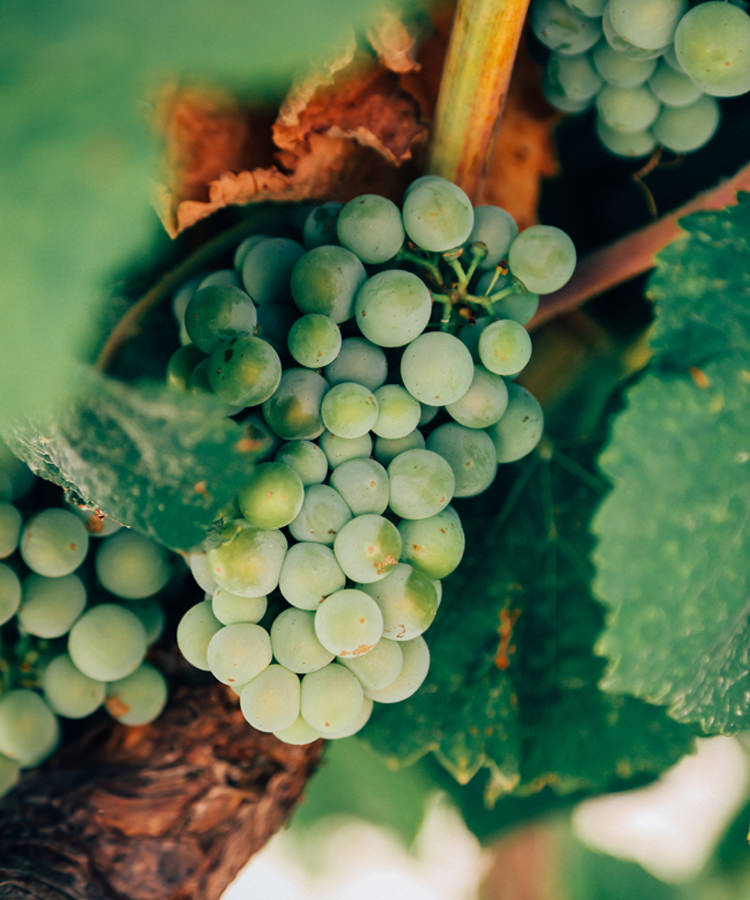Wine tasting notes can seem like they come from a Mad Libs generator. Everything from specific flowers and fruits to descriptors like “zippy” are meant to help drinkers understand the flavors in a glass of their favorite wine. But behind the tasting analogies and loving descriptions of wine as living art, there’s science.
All the flavors in wine come from the grapes and the winemaking process. Your senses aren’t lying to you when you stick your nose in a glass of Pinor Noir and smell cherries, or when you nose a Cabernet Sauvignon from Napa and get a big whiff of vanilla. Wine has many of the natural chemical compounds found in fruit and spices. Here are some of the most notable, grouped by the sense with which you’ll notice the chemical most.
Smell
Smell is the most important sense in wine tasting because scent directly impacts taste. Other than salty, sweet, bitter, sour, and umami, what you perceive as flavors are actually aromas. The following chemicals affect smell, but you’ll also notice them when you sip wine.
Some of the most notable compounds in wine are methoxypyrazines, which are compounds found in both grapes and wine. They’re most commonly found in Bordeaux varieties like Merlot, Cabernet Sauvignon, Cabernet Franc, and Sauvignon Blanc. In these wines, methoxypyrazines come off as tomato stems or green bell peppers. Two others, isopropyl-methoxypyrazine and sec-butyl-methoxypyrazine, are also present, albeit at lower levels. They add, respectively, notes of asparagus and earth.
Not all chemical compounds smell so pleasant. Some can throw off a wine entirely, like those present when the wine is exposed to brettanomyces yeast. Brettanomyces, or brett, can add 4-ethylphenol, which smells like Band-Aids. It can also add 4-ethylguaiacol, which smells like clove and bacon.
Another “off” aroma that can occur when you’re smelling and tasting wine comes from sulfur compounds. But it’s not just cut-and-dry sulfur. Some sulfides smell like rotten eggs and sewage, such as hydrogen sulfide and methyl thioacetate. Then there are sulfides that smell like rubber, including methanethiol (which also has rotten cabbage notes), carbon disulfide (which the Australian Wine Research Institute describes as “chokingly repulsive”), diethyl sulfide (also brings in some garlic notes), and ethanethiol.
And that’s not all. There’s the onion-smelling sulfide, diethyl disulfide; the cabbage sulfide, dimethyl disulfide; and the one that smells like canned corn and asparagus, dimethyl sulfide.
Taste
Specific chemical compounds come into play with our primary tasting flavor profiles: sweet, salty, sour, bitter, and umami.
Acids primarily add sour notes. There are five acids that affect the taste of wine. Acetic acid is produced during fermentation and has a vinegar-like sour. Tartaric and malic acids are extremely tart with subtle fruit flavors, with the later being most similar to a sour green apple. Citric acid is less tart and commonly imparts citrus fruit flavors. Lastly, there’s lactic acid, which is produced during fermentation and is a mild sour like what you find in a-few-days-past-expiry milk.
Alcohol compounds also affect taste. Ethanol, the primary alcohol in wine, beer, and spirits, adds bitter, sweet, and sour flavors. Glycerol, which is present in low amounts except in the case of grapes affected with botrytis, or noble rot, adds thickness and sweet flavors.
Lastly, there are tannins. Tannins are frequently talked about as defining characteristics of red wine. Tannins like anthocyanin are best known for drying out your mouth, but can also add a subtly bitter taste.
The Multifaceted Impact of Oak
When wines are aged or fermented in oak, a specific set of chemical compounds comes into play. While many things are present in grapes, some flavors must come from oak — primarily (and fittingly) toasted oak.
Vanilla is one of the most prominent flavors that you’ll taste in a heavily oaked wine. Cis-lactone adds a sweet vanilla-coconut character, but the most prominent source of vanilla flavors is vanillin, the primary flavor in pure vanilla (it’s also present in toasted oak). If you taste spice and clove, that comes from trans-lactone, and if you taste caramel and butterscotch, that comes from furfural and 5-methyl furfural. Finally, there’s guaiacol, which adds a spicy, campfire-smoke flavor to wine.
For those hoping to drink their way to better understanding the influence of oak, VinePair suggests our oak tasting guide.
